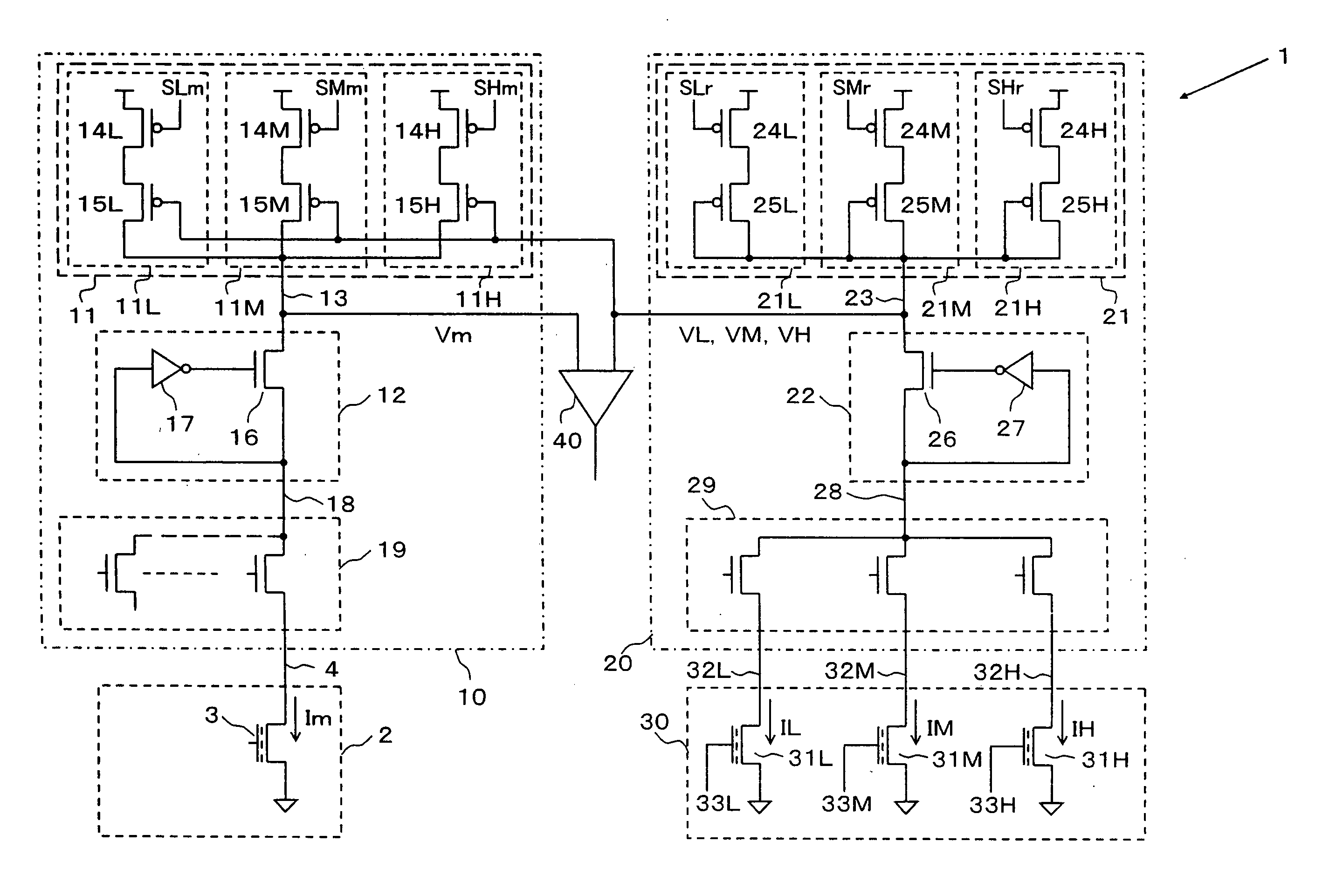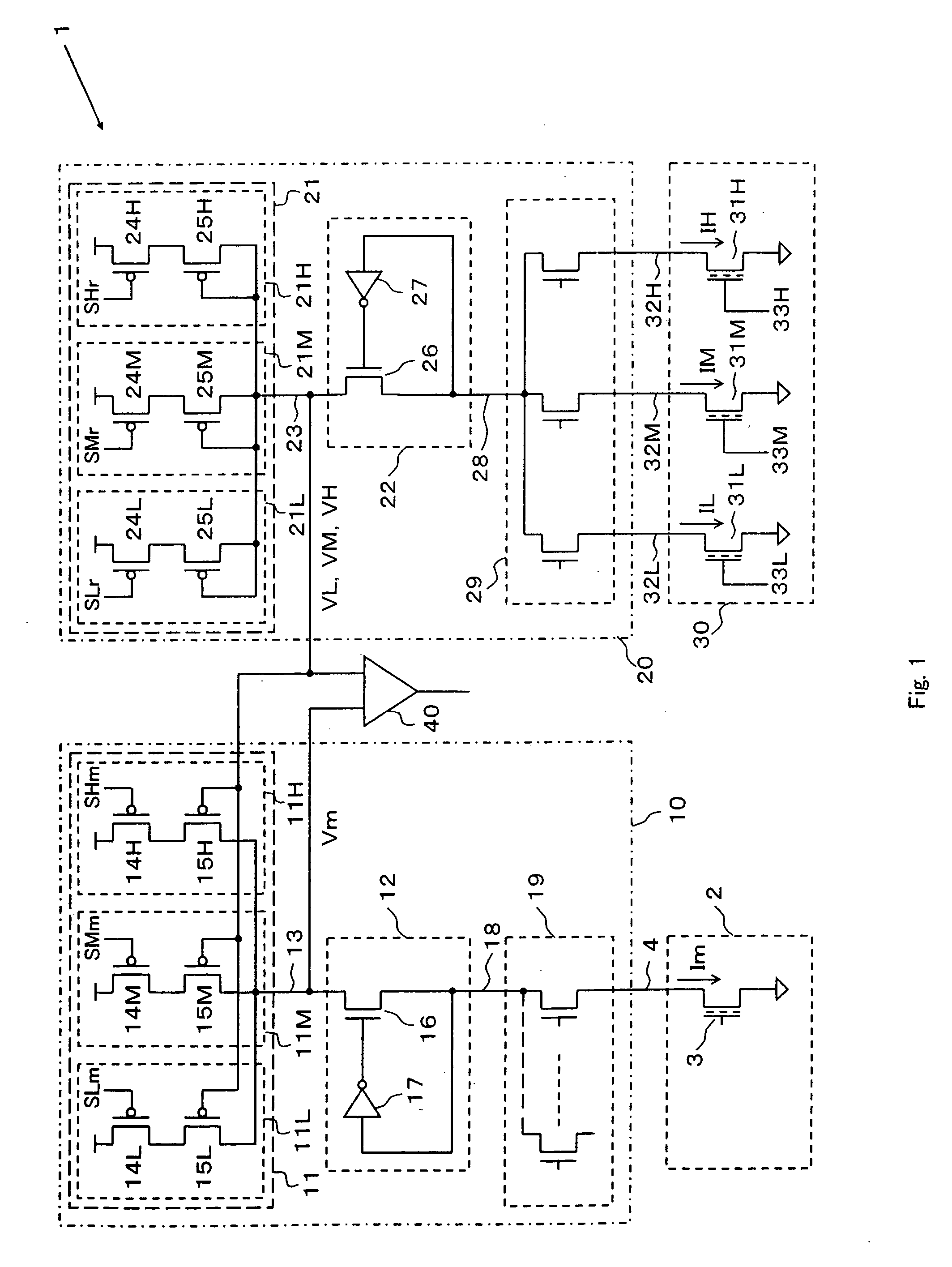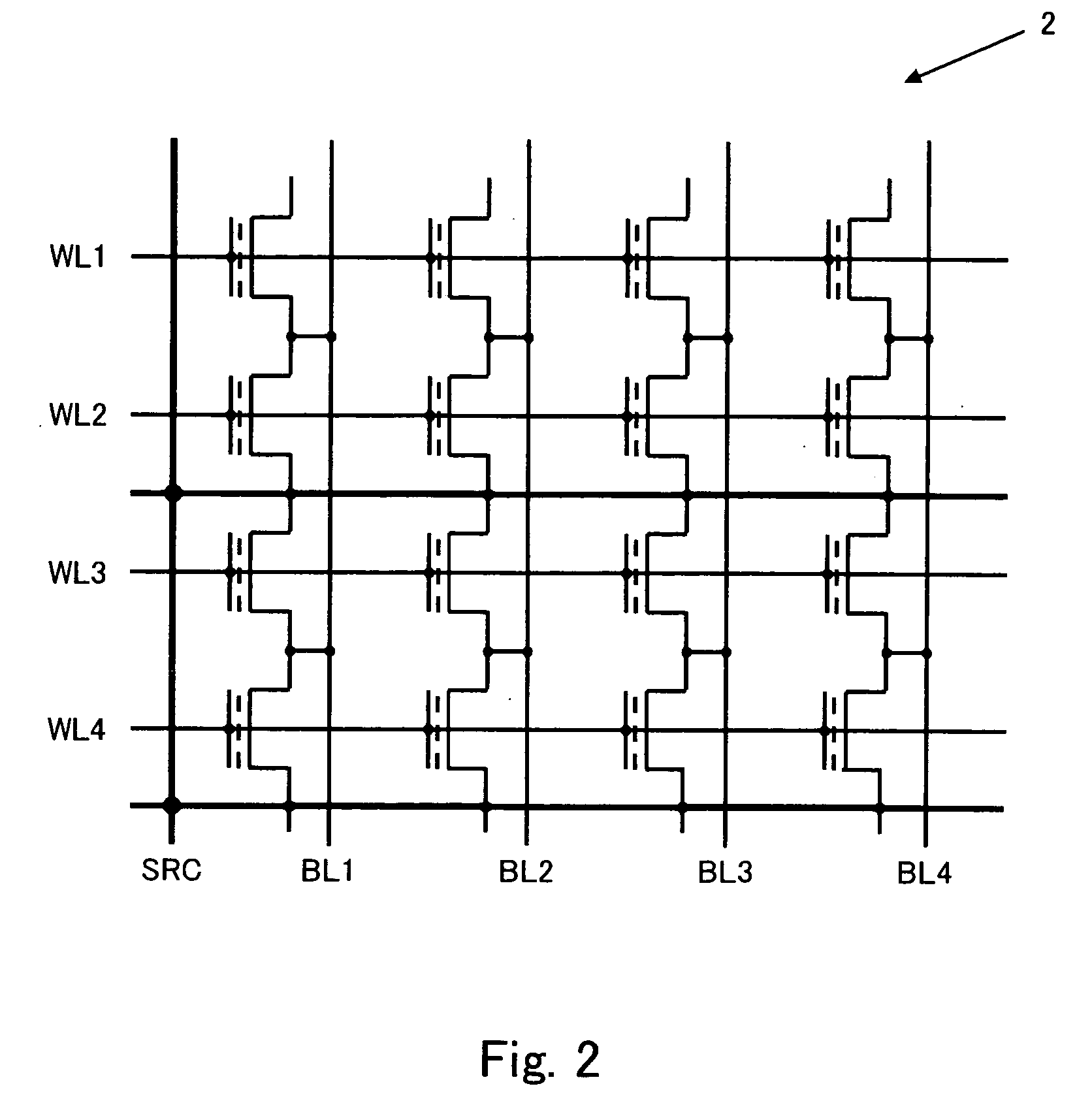Read-out circuit in semiconductor memory device
a semiconductor memory and read-out circuit technology, applied in the direction of static storage, digital storage, instruments, etc., can solve the problems of inability to permit a significant freedom of action in the read-out circuit, disadvantageous increase in production cost, and physical sparing of a generous margin of difference between cell current and the current of the cell, so as to reduce the overall length of time required
- Summary
- Abstract
- Description
- Claims
- Application Information
AI Technical Summary
Benefits of technology
Problems solved by technology
Method used
Image
Examples
first embodiment
[0044]FIG. 1 is a circuitry diagram of the inventive circuit 1. As shown in FIG. 1, the inventive circuit 1 is a read-out circuit for reading a multilevel data from a selected memory cell 3 in a memory cell array 2 which has multilevel, three or more levels, data storable memory cells arranged in an array, which comprises a read-out voltage generator circuit 10, a reference voltage generator circuit 20, a reference memory cell array 30, and a sense circuit 40. It should be noted that the multilevel data storable memory cells in this embodiment is of a four-level data storable type for ease of the description.
[0045] The memory cell array 2 has memory cells arranged in a matrix consisting of rows and columns, as shown in FIG. 2. The drains of the memory cells along each column are connected to common bit lines BL1 to BL4 which extend along the columns while the gates of the memory cells along each row are connected to common word lines WL1 to WL4 which extend along the rows. The sour...
second embodiment
[0075]FIG. 6 is a circuitry diagram showing an inventive circuit 1 of the second embodiment of the present invention. The inventive circuit 1 shown in FIG. 6 includes a read-out voltage generator circuit 10, a reference voltage generator circuit 20, a reference memory cell array 30, and a sense circuit 40 which are assembled as a read-out circuit for reading a multilevel data from a selected memory cell 3 to be accessed in a memory cell array 2 where a number of multilevel data, three or more levels, storable memory cells are arranged in an array.
[0076] This embodiment is differentiated from the first embodiment by the arrangement of PMOSs 15L, 15M, and 15H in their respective current supply paths 11L, 11M, and 11H of a main loading circuit 11 in the read-out voltage generator circuit 10 and the arrangement of PMOSs 25L, 25M, and 25H in their respective current supply paths 21L, 21M, and 21H of a reference loading circuit 21 in the reference voltage generator circuit 20 which both ...
PUM
 Login to View More
Login to View More Abstract
Description
Claims
Application Information
 Login to View More
Login to View More - R&D
- Intellectual Property
- Life Sciences
- Materials
- Tech Scout
- Unparalleled Data Quality
- Higher Quality Content
- 60% Fewer Hallucinations
Browse by: Latest US Patents, China's latest patents, Technical Efficacy Thesaurus, Application Domain, Technology Topic, Popular Technical Reports.
© 2025 PatSnap. All rights reserved.Legal|Privacy policy|Modern Slavery Act Transparency Statement|Sitemap|About US| Contact US: help@patsnap.com



